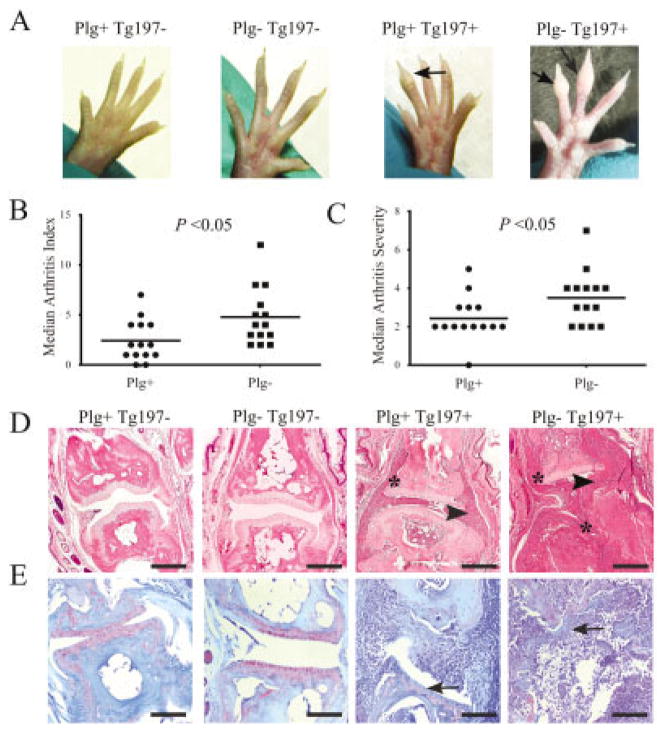Figure 1.
Plasminogen deficiency exacerbates tumor necrosis factor α–induced arthritis in mouse fore paws and hind paws. A, Representative images of hind paws from 10-week-old Tg197− and Tg197+ mice with and without plasminogen. Note the profound swelling in the phalangeal joints (arrows) of Plg−/Tg197+ mice compared to Plg+/Tg197+ mice. B and C, Scatterplots of the arthritis index (B) and arthritis severity scores (C) in the paws of Plg+/Tg197+ mice and Plg−/Tg197+ mice. Symbols represent individual mice; horizontal lines show the median. P values were determined by Mann-Whitney U test. D, Representative hematoxylin and eosin–stained metacarpophalangeal joint sections from 10-week-old Tg197− and Tg197+ mice with and without plasminogen. Note that Plg−/Tg197+ mice displayed substantially more joint destruction, including apparent obliteration of articular surfaces and bone, characterized by extensive synovial hyperplasia (arrowheads) and pannus formation (asterisks) relative to Plg+/Tg197+ mice. E, Representative Safranin O–stained metacarpophalangeal joint sections from 10-week-old Tg197− and Tg197+ mice with and without plasminogen. Note the substantial loss of proteoglycans (arrows) within the articular cartilage in both Plg+/Tg197+ and Plg−/Tg197+ mice. Bars in D and E = 100 μm.

